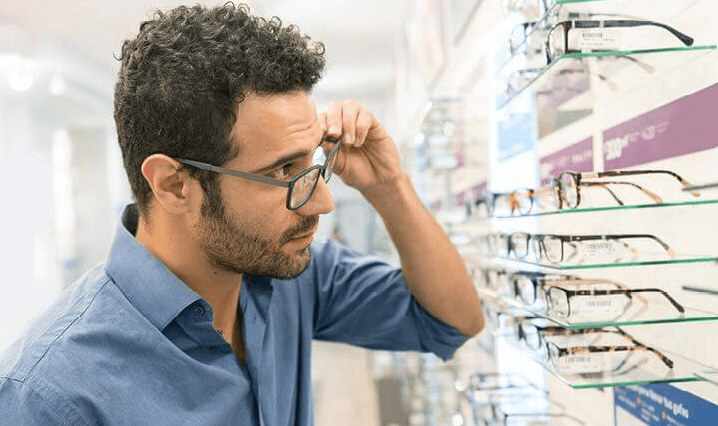
Living with diabetes may not always be easy, but you do everything you can to keep it under control. Besides, you are much more than your diagnosis. That said, it’s not always common knowledge that diabetics are at a higher risk for a number of eye diseases that can disrupt the quality of your vision and the quality of your life. For us at VSP, preventing long-term damage to your eyes is our highest priority. We’re here to not only provide you with affordable vision insurance, but also the trusted information you need to protect your eye health from the effects of your diabetes.
Getting to the retina of the problem: Understanding how diabetes affects your eye health
Similar to other complications associated with having diabetes or prediabetes, vision problems begin with high glucose levels in your blood, also commonly known as your blood sugar. When you have high blood sugar levels for a short period, your entire body reacts to compensate—this includes your eyes. In this case,temporary changes or fluctuations in vision occur becase the lens inside the eye swells, changing its shape and causing blurry vision.
On a long enough timeline though, consistently elevated blood sugar levels can lead to irreversible vision changes and diabetic eye disease. When your retinal blood vessels are continually inflamed, they eventually weaken and leak fluid. Additional blood vessels form to keep up the supply of blood, but these have a higher risk of bleeding into other parts of the eye.
There are four main eye diseases associated with this longer-term diabetic eye damage.
The big four: Eye problems resulting from diabetes
Diabetic retinopathy
It sounds complicated, but it’s, more or less, a continuation of what has already been said. Once additional blood vessels begin to grow around your retinas to make up for those that are already failing, then vision loss results. The new blood vessels are not only weaker than the originals, making them more likely to leak fluid and bleed, but they also grow into areas that interfere directly with vision transmittance.
“8.6% of diabetics over the age of 45 have diabetic retinopathy.”
Diabetic macular edema
The macula is the specific part of the retina that is responsible for the sharp vision needed to read, drive a vehicle, and recognize the differences between people’s faces. With high blood pressure at the back of the eye resulting from diabetes, the internal pressure of the eye is also at risk for increasing to levels that damage this sensitive part of the retina. Eventually, if left undiagnosed, enough damage can occur that leads to severe vision loss and even blindness in rare cases. Oftentimes, people with diabetic macular edema, as it’s also known, also have other diabetic-related vision problems. As such, there is a higher chance of it being diagnosed and treated before complete blindness occurs.
“4.3% of diabetics over the age of 45 have diabetic macular degeneration.”
Glaucoma
Blood vessels are not the only part of the body that is affected by elevated blood sugar levels. With time, consistent high blood glucose also damages nerves. This is why some diabetics begin to lose feeling in their hands and feet at the later stages of the disease. The optic nerve is also a part of the nervous system and it is particularly sensitive to the effects of high blood sugar. Glaucoma is simply the long-term damage done to the optic nerve over time. This is not always caused exclusively by diabetes, but it is, nevertheless, a major contributing factor. Diabetics have almost twice as high of a risk of developing the disease than non-diabetics.
“7.1% of diabetics over the age of 45 have glaucoma.”
Cataracts
Each one of your eyes has a lens in it that focuses the light entering them onto the retina at the back of the eyes to produce an image. Normal lenses are clear and allow as much light as possible to pass into the eye, but as we all age, they lose some of this clarity. Some behaviors and diseases accelerate the rate at which your lenses become cloudy. When they become cloudy enough to affect your vision, this is known as cataracts. People with diabetes are more likely to develop cataracts earlier than people without the disease. The reasons why are still not 100% clear, but it is very likely that high blood glucose leads to deposits forming in the lenses.
“1/3 of diabetics over the age of 45 have cataracts.”
Preventing diabetic eye disease: Managing the ABC’s of diabetes
First of all, it is absolutely critical that if you have been diagnosed with diabetes, or think you may be at risk for diabetes, that you schedule an annual comprehensive eye exam with your optometrist or vision specialist. Affordable vision insurance can help reduce your costs of the exam and any vision correction prescribed by your doctor. During an eye exam, your eye doctor is able to see all of the finer details of your retinas and will identify if you have any signs of damage caused by diabetes. Furthermore, they are in the best position to diagnose any vision loss already caused by diabetes and advise you on how you can prevent further damages. Ultimately, your eye doctor is your first line of defense in preventing long-term diabetic eye disease and preserving your eye health.
The second preventive measure is to quit smoking if you do smoke. Habitual tobacco users have notoriously high blood sugar, as nicotine affects the way cells react to changing glucose levels in the bloodstream. Smoking only makes it even more difficult to manage your diabetes if you’re hopeful to avoid later complications of the disease.
Finally, and probably most importantly, is to manage your diabetes via your blood sugar, blood pressure, and cholesterol, sometimes called the diabetes ABC’s. Your primary care physician will already be able to advise you on various medications and treatments to keep each of these within a healthy range, but that’s only half the battle. The real management comes when you make efforts to change your diet, manage your stress levels, and exercise regularly. All of these behavior changes not only help you avoid diabetic eye diseases and vision loss, but they help you achieve an overall improved sense of well-being.
Conclusion
All in all, it’s up to you to take control of your diabetes and do everything you can to keep yourself and your eyes healthy. Thankfully though, you’re not in this alone. Affordable vision insurance is always available through VSP and is ready to meet all of your vision needs. If you don’t have vision insurance, find out how VSP Individual Vision Plans can help you save on your next eye exam.
This blog was reviewed by Dr. Jennifer Wademan. Dr. Wademan is the owner of Bidwell Optometry in Folsom, CA.
Your vision. Your way.
Not covered for vision? Get an individual plan, customized for you – including where you want to use it: at the doctor, in a retail location, or even online.

Don't Let Your 2020 Vision Insurance Go to Waste
The last few months of the year are often the busiest, and the simple things can be overlooked. As we near the end of September, we want to help you...



